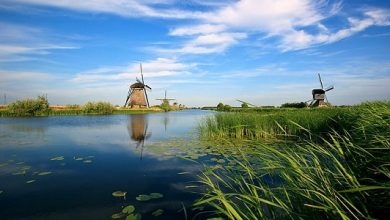What are Primary consumers main consumers and Examples
Primary or first-order consumers are organisms that consume energy producers and nutrients. In ecology, organisms that feed on other organisms are classified as consumers.
Primary consumers differ from other consumers in that they feed on organisms that produce their own food. Energy and nutrients consumed by primary consumers (based on producers) become food for secondary consumers who consume primary consumers.
An ecosystem requires a constant recharge of energy based on the fact that energy is lost through life processes, and this is transmitted through the trophic levels of the ecosystem.
Photosynthesis is the method used by plants and algae to convert sunlight into energy, which supplements energy demand and neighboring ecosystems.
Primary consumers feed primary producers. But who are the main producers?
This includes plants, algae and microscopic organisms that capture energy and nutrients from the environment. These are called “autotrophs” because they make their own food.
In short, primary consumers consume primary producers to meet their energy and nutrient needs. Examples of consumers can range from a flea to a zebra.
Who are the main consumers?
On Earth, large numbers of mammals, such as cattle, antelopes, horses, hippos, and elephants, are examples of primary consumers.
No doubt there are other primary consumers on Earth that are much smaller and less exotic. The mouse, the squirrel and the beetle are examples of primary consumers.
Other levels of the food chain
Within the ecological food chain, consumers are classified into three main groups: primary, secondary and tertiary consumers.
Primary consumers, as already mentioned, are those who feed on primary producers.
secondary consumers
Secondary consumers are mainly carnivores that feed on other animals. Omnivores, which feed on plants and animals, can also be considered secondary consumers.
tertiary consumers
Tertiary consumers, sometimes known as predators, are at the top of the food chain and can feed on both secondary consumers and primary consumers.
These tertiary consumers may well be carnivores or omnivores. Humans are one example of a tertiary consumer.
Examples of primary consumers
1- Ruminants
Such as cows, sheep, giraffes and goats are the main herbivore consumers. They feed on plant material such as grass, herbs, roots and twigs.
Because the cellulose found in plant cell walls is difficult to break down, ruminants have an adaptive system that allows them to acquire nutrition through fermentation and digestion within four specialized chambers of the stomach.
Cows graze the plant material with side-to-side motions, moving the food to a hard area of the skin and on top of the mouth (instead of the front of the tooth) called the tooth pad.
The chewed food is then directed to the first digestive chamber, the rumen and the reticulum, where the food is mixed with saliva and separated into liquid form and solid mass.
This mass is returned and then chewed to reduce the particle size of the food as little as possible. It is then returned into two chambers, where the fibrous cells of the cells are broken down by protozoa, bacteria and fungi.
The complexity of the ruminant stomach demonstrates the difficulties large animals have in extracting sufficient nutrients from plant carbohydrates.
However, the volatility of the fatty acids and proteins produced as a result of this system constitutes an extremely important component of the human diet.
2- Zooplankton
They are microscopic organisms that exist as accumulating organisms suspended in the oceans. These include protozoans as well as metazoans (animals) that are in their juvenile stage, such as molluscs and crustaceans.
Most of the organisms that make up zooplankton are heterotrophs, which means that they acquire their nutrients from the carbon produced through photosynthesis. This process is carried out by primary ocean producers who convert inorganic coal into usable energy.
Also, almost entirely, zooplankton is the main producer of food through its filtration. In this feeding strategy, water, which contains phytoplankton, is passed through specialized filters, the phytoplankton is filtered and digested.
3- Herbivorous birds
Many bird species can be carnivorous or omnivorous. These occupy the highest trophic level of herbivorous birds. However, many birds feed only on fruits, seeds and cherries, which places them at the primary consumer level within the trophic pyramid.
Birds, which base their diet on plant material, often have morphologically adapted beaks that allow them to exploit their food source.
Toucans, parrots and parakeets have extremely strong spikes that help them to destroy nuts and furthermore act as a stabilizing device for climbing large trees and reaching the highest fruits.
Hummingbirds, others of the same species, generally have very small, elongated and pointed bodies, which allow access to the nectar deeper inside the flower bodies.
Many canaries, parakeets and finches have a diet consisting of grains and seeds, which is why they have a short, hard, dotted beak. This allows them to collect the seeds with great precision.
Importance in the ecosystem
Through the food chain and the perfect balance that is maintained between them, there is an ecological well-being that prevents the overpopulation of animals, the extinction of pests and allows the ultimate goal of feeding humans.
Without a proper balance, the ecosystem could collapse and cause all affected species to decline. This would undoubtedly lead to a corrupt and ineffective food chain.




